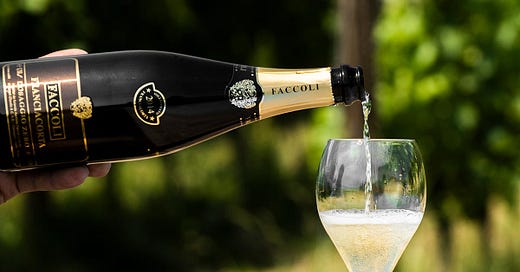Franciacorta sits in Northern Italy’s Lombardy region, flanked by glacial lakes and Alpine foothills. Although often compared to its French counterpart, it has steadily carved out its own reputation as a quality-driven DOCG. Granted its elevated status in 1995, Franciacorta adheres strictly to the traditional method—requiring secondary fermentation in the bottle, regulated lees aging, and precise guidelines on permitted grape varieties.
Core Attributes of Franciacorta Production
Grapes – Chardonnay and Pinot Nero (Pinot Noir) form the backbone, with smaller percentages of Pinot Bianco and, more recently, Erbamat added to bolster acidity and complexity.
Aging Requirements – Non-vintage Franciacorta requires at least 18 months on lees (longer than Champagne’s 15 months), with vintage (millesimato) and riserva bottlings demanding extended cellar time.
Climate & Terroir – Lake Iseo’s moderating influence and the protective Alpine foothills create a relatively mild environment. Warmer summers lend a rounder fruit profile compared to cooler regions, though sandy to morainic soils support subtle mineral notes and vivacious acidity.
Style & Market Perception – Franciacorta’s flavor often blends orchard fruit, citrus, and a discreet almond-like character. Yet global consumers frequently conflate Italian sparkling wine with Prosecco, so producers work diligently to highlight their more complex, traditional-method identity.
Quiz
How might Franciacorta’s mandatory aging requirements influence its flavor complexity and texture compared to other sparkling wines?
In what ways do local geographic features (e.g., Lake Iseo and Alpine foothills) moderate the climate to benefit sparkling wine production?
Deep Dive – Evolving Traditions & Climate Influence
Franciacorta can show riper fruit notes than Champagne, reflecting Northern Italy’s generally warmer climate.
Keep reading with a 7-day free trial
Subscribe to Daily Terroir: Exploring Wine Regions One Day at a Time to keep reading this post and get 7 days of free access to the full post archives.






